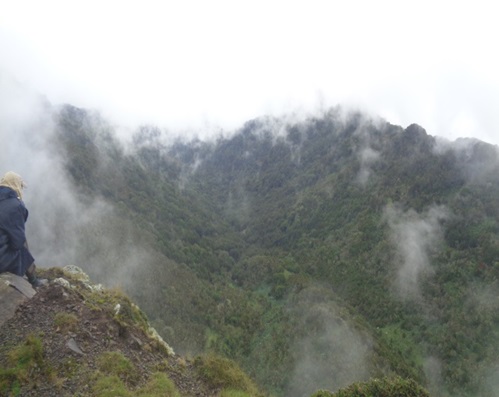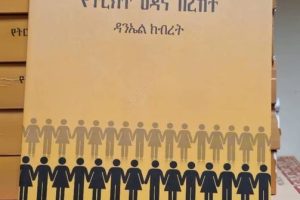
COMPILED BY STAFF REPORTER
Set high in the mountains of Amhara State, just 130km north of capital Addis Ababa, Ethiopia’s oldest state forest, Wof Washa (meaning Bird Cave Forest), is diverse in both animal and plant life.
Located within the Ankober-Debre Sina Escarpment, an Eastern Afromontane Key Biodiversity Area (KBA), the forest is one of the oldest proclaimed state forests and is rich in biodiversity.
The area covers some 6000ha of the Rift Valley escarpment. The forest is on very steep slopes in (mostly east-facing) narrow valleys, with altitudes ranging from 2,000 m to 3,730 m.
Wof Washa is one of the most blessed forests with a remarkable number of common, rare and endemic plant species and wild animals. It is hugely bio diverse and home to a number of wild plant and animal species that are unique and some of them are even endemic to Ethiopia and East Africa. Many of the species are habitat specific and can be found in limited areas in the forest.
Studies conducted to determine the floristic composition of the forest revealed that about 252 species of plants were so far recorded in the Wof-Washa Dry Afromontane Hotspot Forest: 13 percent tree species, 7 percent shrub species and 80 percent herb species.
Among these, 29 plant species about 12 percent are endemic to Ethiopia while 7 species (3 percent) are nearly endemic. The number of plant species in the Wof-Washa Dry Afromontane Hotspot Forest increased to 394 species: 50 (13 percent) tree species, 72 (18 percent) shrub species, 254 (64 percent) herb species, and 18 (5 percent) liana species. This shows that the taxonomic inventory conducted in the forest is not yet completed.
The common woody plant species in the Forest include jumiper and oil trees, oregano (Thymus serulatus), megfra (Lobellia rhynchopet), and Guassa (Festica abyssinica).
Wof Washa Forest is also known for a number of bird species. Some of the endemic bird species in the forest include Ankober serin (Serinus ankoberensis), abyssinian catbird (Parophasma galinieri), abyssinian long-claw (Macronyx flavicollis), Ethiopian siskin (Serinus nigriceps), spot-breasted lapwing (Vanellus melanocephalus) and wattled ibis (Bostrychia carunculata). Moreover, the escarpment of the Wof-Washa Dry Afromontane Hotspot Forest was regarded as one of Ethiopia’s important bird areas.
Likewise, the Wof-Washa Dry Afromontane Hotspot Forest provides shelter, food, and breeding sites for a number of wild mammal species including anubis baboon (Papio anubis), gelada (Theropithecus gelada), Menelik’s bushbuck (Tragelaphus scriptus meneliki), common duiker (Sylvicapra grimmia), colobus monkey (Colobus guereza), grivet monkey (Ceropithecus aethiops).
klipspringer (Oreotragus oreotragus), spotted hyena (Crocuta crocuta), leopard (Panthera pardus), rock hyrax (Procavia capensis), common jackal (Canis mesomelas), common warthog (Phacochoerus africanus), African civet (Civettictis civetta), porcupine (Hystrix cristata), serval cat (Felis serval), Abyssinian genet (Genetta abyssinica), caracal (Felis caracal), Starck’s hare (Lepus starckii), honey badger (Mellivora capensis), and bush pig (Potamochoerus larvatus) are the other blessings of the area.
For example, the forest supports important communities of ruppell’s chat (Myrmecocichla melaena), scarce swift (Schoutedenapus myoptilus), lammergeyer (Gypaetus barbatus), mountain buzzard (Buteo oreophilus), peregrine falcon (Falco peregrinus), red-breasted sparrow-hawk (Accipiter rufiventris), alpine swift (Tachymarptis melba), crag martin (Ptyonoprogne rupestri), and blue rock thrush (Monticola solitarius).
Tourism Venture in the Wof-Washa Dry Afromontane Hotspot Forests The previaling plant, wild mammal, and bird species are some of the top tourist attractions for the incoming visitors who are interested in visiting the Wof-Washa Dry Afromontane Hotspot Forest.
Moreover, the gorgeous landscape on which the forest has grown is attractive scenery for the arriving tourists in the forest. Mosaic of landscapes, natural and plantation forests, mosaic of cultures and traditions, the presence of historical site in the vicinity (e.g. Menelik’s Palace in Ankober), variety of bird species, and the presence of different wild mammal species including the large body-sized endemic gelada and Menelik’s bushbuck are also among the top tourist attractions in the area.
As studies indicate, over half of Ethiopia’s highland bird species have sheltered here, in Wof Washa Forest.
Wof Washa Forest, also called as the ‘lung’ of Amhara State, because it is the last remnant of natural forest in the area, is one of the very few remaining natural forests in Ethiopia. It is the only stretch of forest left in the surrounding. The main reason for its survival is its inaccessibility.
As it is always stated and several researchers indicated, Ethiopia has a large natural diversity with a range of climates resulting from its topography and latitudinal position). The country’s topographic and geographic qualities create numerous tourist attractions, varying in type and appealing to many interests. The attractions include historical, cultural, archaeological, anthropological, scenic, climatic, floral and faunal resources.
Such a unique combination of attractions within a single country has no match on the African continent, and is seen rarely elsewhere in the world.
The unique plant, wild mammal, and bird species along with the historic sites make the area one of f the top tourist attractions for the incoming visitors who are interested in visiting the Wof-Washa Dry Afromontane Hotspot Forest. Moreover, the gorgeous landscape on which the forest has grown is attractive scenery for the arriving tourists in the forest.
Mosaic of landscapes, natural and plantation forests, mosaic of cultures and traditions, the presence of historical site in the vicinity such as Menelik’s Palace in Ankober, variety of bird species, and the presence of different wild mammal species including the large body-sized endemic gelada and Menelik’s bushbuck are also among the top tourist attractions in the area.
The Ethiopian Herald March 5/2021





